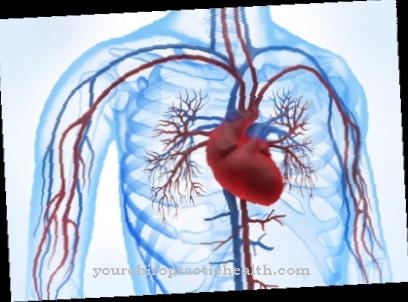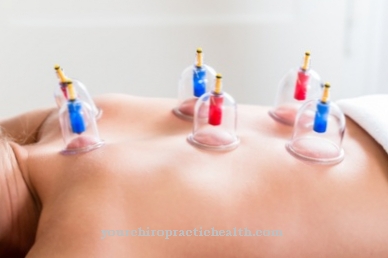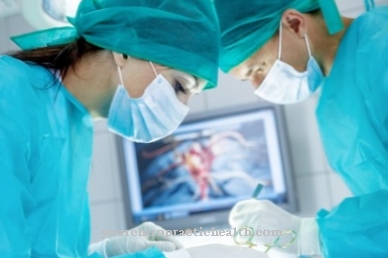Pilates is a fitness training for the whole body that primarily strengthens the deep muscles. Pilates is based on a number of principles, including conscious breathing. In addition to physical training, Pilates is also said to induce a state of deep relaxation and balance.
What is Pilates?

Pilates is a form of fitness training that involves the whole body. In addition to strength exercises, stretching units are also incorporated into the training. The primary goal is to deeply strengthen the muscles, especially the muscles of the back, abdomen and pelvis. At the same time, the training increases flexibility and induces deep relaxation and balance.
The "Pilates method" is often used, which means the same training. The pillars of Pilates are concentration, the centering of the forces (centering), the control over the movements (control) and the precision of the execution (precision), flowing sequences of the exercises (flowing movement) and conscious breathing (breathing) . These principles were first published in 1980 and do not go back directly to the founder of this fitness training, Joseph Pilates, but rather represent an extract from his methods.
Function, effect & goals
No special equipment is required to take part in a Pilates course. A comfortable mat, as close-fitting sportswear as possible and a pair of slippers are sufficient equipment. However, there are also devices for Pilates on which beginners in the sport can initially learn to perform all movements correctly in a guided manner in order to create a good muscular foundation for free training on the mat.
The ultimate goal of the Pilates method is to strengthen the muscles throughout the body. In doing so, emphasis is placed on the deep, small and rather weak muscles, which are less stressed in many other sports. The exercises that are performed in Pilates also stimulate the circulation.
The desired result of regular Pilates training that stands out most visually is an upright and healthy posture. In this way, long-term pain resulting from poor posture can be prevented. Pilates is also extremely beneficial for the physical appearance. It shapes and firms the entire body and makes the silhouette appear fit and slim.
The Pilates method has around 500 different exercises. The basis of every exercise is the training of the supporting muscles for the spine. These muscles, which are located around the spine in the middle of the body, are called "powerhouses" in Pilates. The powerhouse must be activated for all exercises so that they are particularly beneficial and effective for the affected muscles in the abdomen and back, which are responsible for posture.
Since all movements in Pilates are performed fluently, slowly and with high concentration, the sport is extremely gentle on the entire body, but especially on the joints. For this reason and because Pilates leads to a steady strengthening of all muscles in the body, it is suitable for many people for rehabilitation after an accident. The slowness of the movements and the high level of awareness under which the exercises must be performed also improve the coordination and balance of the body. They also increase awareness of your own body. The positive effect of Pilates on the psyche should not be neglected.
Conscious breathing in particular triggers a high level of concentration on your own body and deep relaxation. In the long term, Pilates training increases general balance, also in everyday life. The more upright posture, which is achieved through regular Pilates exercises, also makes the respective person appear more self-confident towards other people. In Pilates, particular attention is paid to conscious breathing.
Regular exercisers also benefit from this in everyday life. Correct and conscious breathing also plays a major role in the efficiency of training. The breath should be calm and even and felt as a flowing stream. The body supports correct and conscious inhalation: the supporting muscles of the spine should be activated and the navel should be pulled in slightly. There is also an emphasis on the exhalation. It should be deep and as complete as possible. Breathing should always be self-controlled during the exercises and should run in harmony with the movements.
You can find your medication here
➔ Medicines for relaxation and nerve strengtheningRisks, side effects & dangers
It is important in Pilates that the movements of the individual exercises are carried out correctly in order not to negate the gentle effect on the joints that is created by the flowing and slow movements. A professionally competent introduction to the methods of Pilates is therefore essential. Good trainers should also constantly pay attention to their posture and movement sequences during the various exercises. This reduces the risk of bad posture.
Some participants in Pilates classes complain of subsequent lower back pain. The reason for this is that the powerhouse, i.e. the deep muscles of the trunk, was not activated in the affected person or that the movements were simply performed incorrectly or imprecisely. In particular, a hollow back should be avoided when performing the exercises.
Overall, however, Pilates is a gentle and health-promoting sport that has a very low risk of injury thanks to slow and controlled movements. A short warm-up unit should benefit the skeleton, muscles, joints and ligaments, but also in Pilates.









.jpg)



.jpg)



.jpg)







.jpg)


